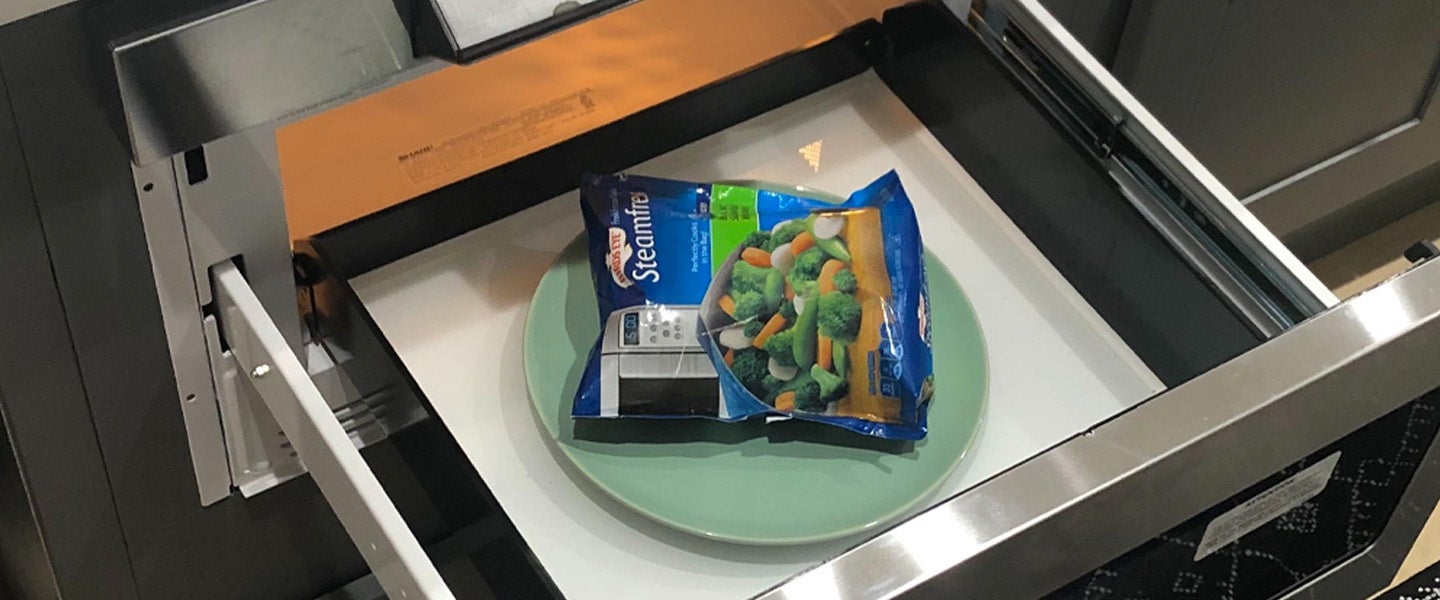Blasting something in the microwave is commonly considered to be an ease-over-quality cooking method, one that sacrifices taste, texture and possibly even your long-term health for the luxury of being able to heat a plate of pizza pockets in less than two minutes while stoned out of your mind. For these reasons, highly revered chefs, like Gordon Ramsay, have dedicated their lives to defaming microwaves and condemning any hash slinger who resorts to employing one in their kitchen.
But cooking at home is very different to cooking for customers in a restaurant, and sometimes, you either have macaroni for dinner, or macaroni with broccoli out of a microwaveable bag. Considering how much hate microwaves endure — despite how safe microwaved food really is — blasting vegetables in a plastic bag always feels a little sketchy (and a lot depressing). So, while contemplating life and watching my big bag of broccoli spin around in the microwave, I called Bob Schiffmann, president of the International Microwave Power Institute and microwave safety expert, to see if my concerns about eating frozen food from a superheated plastic bag were warranted.
Before we get into specifics about the bags themselves, though, know that frozen vegetables (and fruits) are incredibly healthy, perhaps even more so than their fresh counterparts. Furthermore, as Schiffmann explains, “What people don’t understand about microwaves is that they’re probably the most nutritious means of cooking food.” This, he explains, is because cooking methods like boiling, which involves lots of water and high heat, can result in a serious loss of nutrients from the likes of vegetables. Microwaves, meanwhile, rarely involve large amounts of water, nor do they get as hot as pots and pans.
All of which is to say that frozen vegetables are indeed healthy, and so is microwaving them. What about the plastic bags, though? “My wife uses steamer bags all the time, with good results,” Schiffmann says. “There’s no concern about plastic components leaching into the food, since the steamer bags are specially designed. They don’t absorb any microwave energy whatsoever, so everything goes into the vegetables.”
In fact, Schiffmann suggests that the notion of plastics leaching chemicals into foods in the microwave is a big myth, anyway, pointing me toward this Good Housekeeping piece, where they tested an assortment of plastic containers and concluded that “none of the samples” had detectable levels of harmful chemicals.
As an added bonus, Schiffmann also mentions that cooking vegetables in microwaveable bags is safe for another reason, too. “They have a very subtle steam-release system,” he says, which ensures that your face isn’t blasted with steam when you go to open the bag. “Steam is really dangerous, because it carries an enormous amount of calories — in other words, you can get a much worse burn from steam than you can from hot water.” That’s why the packaging on microwaveable foods often tells you to poke holes in the plastic before heating, something that these bags take care of so you don’t have to.
So to whoever invented them: for bolstering my macaroni-based diet with some easy-to-heat veg, my body thanks you.

